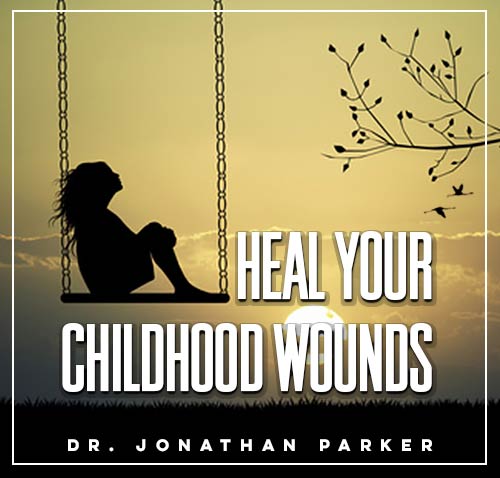Childhood Trauma Recovery: Find Healing

Before diving in, please note: This post is for informational purposes only. If you’d like to know more about how we approach topics, feel free to check out our friendly Disclaimer Page.
Hey there, amazing readers! 🖐️ Just a quick note: yes, we know there are a lot of ads here. Trust us, we get it—it’s not the prettiest look, but they help us keep this blog alive and kicking. Those pesky little ads cover the costs of all the behind-the-scenes magic, from hosting and tech stuff to creating content we hope you’ll love.
We’re committed to delivering quality posts, and your support (even just sticking around despite the ads) means everything to us. So, bear with us, and thanks for helping us keep the good vibes rolling. Now, on to the fun stuff! 😉
TRANSLATE BUTTON AT THE END OF THE ARTICLE
A Quick Overview
Childhood trauma is a deeply distressing or disturbing experience that occurs during a person’s formative years.
This can include physical, emotional, or sexual abuse, neglect, witnessing violence, or experiencing a natural disaster.
Childhood trauma can have long-lasting effects on a person’s mental, emotional, and physical well-being if left unaddressed.
However, with the right support and interventions, individuals can find healing and recovery from their traumatic experiences.
In this article, we will explore the impact of childhood trauma on development, signs and symptoms to look out for, the importance of seeking help, different therapies for trauma recovery, and ways to support children through their healing journey.
Understanding Childhood Trauma
Childhood trauma can have a profound impact on a person’s sense of safety, security, and trust in the world.
When a child experiences trauma, their brain can become wired to constantly be on high alert, leading to difficulties in regulating emotions and behaviors.
This can affect their relationships, self-esteem, and overall well-being.
It is important to recognize that trauma is not the fault of the child and that healing is possible with the right support and interventions.
Impact of Childhood Trauma on Development
Childhood trauma can disrupt normal development processes, impacting cognitive, emotional, and social skills.
Children who have experienced trauma may struggle with issues such as attachment difficulties, poor impulse control, low self-esteem, and difficulty in forming healthy relationships.
Trauma can also affect brain development, leading to difficulties in processing emotions and making sense of the world.
It is essential to address childhood trauma early on to prevent long-term negative consequences on a child’s development.
Signs and Symptoms of Childhood Trauma
Recognizing the signs and symptoms of childhood trauma is crucial in providing the necessary support and interventions for healing.
Some common symptoms of childhood trauma include:
Nightmares or flashbacks
Withdrawal from activities or relationships
Anxiety or depression
Aggressive behavior
Difficulty concentrating
Physical complaints with no medical cause
Changes in eating or sleeping patterns
If you notice any of these symptoms in a child, it is important to seek professional help to address their trauma.
Importance of Seeking Help
Seeking help from a therapist or mental health professional is crucial in supporting a child through their trauma recovery process.
Therapy can provide a safe space for children to express their thoughts and feelings, learn coping strategies, and process their traumatic experiences in a healthy way.
Additionally, therapists can help children develop resilience and build positive coping skills to navigate the challenges they may face in the future.
Types of Therapies for Trauma Recovery
There are several types of therapies that have been found to be effective in helping children recover from trauma.
Some common therapies include:
Cognitive Behavioral Therapy (CBT): This type of therapy helps children identify and change negative thought patterns and behaviors related to their trauma.
Play Therapy: Play therapy allows children to express themselves through play, which can help them process their emotions and experiences in a non-threatening way.
Eye Movement Desensitization and Reprocessing (EMDR): EMDR is a therapy technique that helps children process traumatic memories and reduce their emotional impact.
Discover "SUPERFOODS: The Key to Health and Balance🥗" 🌿🌺
It is important to work with a therapist to determine the most appropriate therapy approach for a child’s specific needs.
Building Resilience in Children
Building resilience in children is essential in helping them cope with and recover from trauma.
Resilience is the ability to bounce back from adversity and overcome challenges.
Some ways to build resilience in children include:
Encouraging positive relationships with caring adults
Teaching problem-solving skills
Promoting a sense of belonging and community
Encouraging healthy coping strategies, such as exercise and mindfulness
By fostering resilience in children, caregivers can help them navigate the healing process and develop the strength to overcome their traumatic experiences.
Creating a Safe and Supportive Environment
Creating a safe and supportive environment is key in helping children feel secure and empowered in their healing journey.
Caregivers can support children through trauma recovery by:
Providing consistent love and support
Listening to and validating their feelings
Creating a sense of routine and structure
Setting boundaries and expectations for behavior
Modeling healthy coping strategies
By creating a safe and supportive environment, caregivers can help children feel heard, understood, and cared for as they work through their trauma.
Healing Techniques for Children
In addition to therapy, there are several healing techniques that can support children in their trauma recovery.
Some techniques include:
Mindfulness practices: Mindfulness can help children stay present in the moment and manage overwhelming emotions related to their trauma.
Art therapy: Art therapy allows children to express themselves creatively, which can be a powerful tool in processing their trauma.
Yoga and movement therapy: Yoga and movement can help children release tension and stress stored in their bodies from their traumatic experiences.
These healing techniques can complement therapy and provide children with additional tools for coping and healing.
Coping Strategies for Families
Supporting a child through trauma recovery can be challenging for families, but there are coping strategies that can help caregivers navigate this process.
Some coping strategies for families include:
Educating themselves about trauma and its effects
Seeking support from other caregivers or professionals
Practicing self-care to manage stress and burnout
Communicating openly and honestly with the child about their feelings and experiences
Being patient and understanding of the child’s needs and progress in recovery
By implementing these coping strategies, families can create a supportive environment for the child and themselves as they navigate the healing journey together.
Supporting a Child Through Trauma Recovery
Supporting a child through trauma recovery requires patience, understanding, and empathy.
Caregivers can support a child by:
Listening to their feelings without judgment
Validating their experiences and emotions
Discover "Sports Nutrition: The Importance of Nutrition and Exercise for Overall Health 🥗🏋️"
Encouraging them to express themselves in healthy ways
Providing reassurance and comfort when needed
Celebrating their progress and resilience
By supporting a child through trauma recovery, caregivers can help them feel safe, supported, and empowered in their healing journey.
Progress and Setbacks in Recovery
Trauma recovery is a process that can have ups and downs, with progress and setbacks along the way.
It is important for caregivers to be patient and understanding as children navigate their healing journey.
Celebrating small victories, acknowledging setbacks, and adjusting strategies as needed can help children continue moving forward in their recovery.
Importance of Self-Care for Caregivers
Taking care of oneself is crucial for caregivers supporting a child through trauma recovery.
Caregivers may experience stress, burnout, and compassion fatigue while supporting a child through their healing journey.
It is important for caregivers to prioritize their own well-being by:
Seeking support from other caregivers or professionals
Engaging in self-care activities, such as exercise, meditation, or hobbies
Setting boundaries to protect their own mental and emotional health
Practicing mindfulness and stress management techniques
Remembering that self-care is not selfish, but necessary for providing effective support to the child
By prioritizing self-care, caregivers can ensure they have the emotional and physical resources needed to support a child through trauma recovery effectively.
Conclusion
Childhood trauma recovery is a complex and challenging process that requires patience, understanding, and specialized support.
By recognizing the signs and symptoms of childhood trauma, seeking help from therapists, and implementing healing techniques and coping strategies, children can find healing and resilience in the face of adversity.
Caregivers play a crucial role in supporting children through their trauma recovery journey by creating a safe and supportive environment, building resilience, and prioritizing self-care.
With the right interventions and support, children can overcome their traumatic experiences and thrive in their future.

The Enlightenment Journey is a remarkable collection of writings authored by a distinguished group of experts in the fields of spirituality, new age, and esoteric knowledge.
This anthology features a diverse assembly of well-experienced authors who bring their profound insights and credible perspectives to the forefront.
Each contributor possesses a wealth of knowledge and wisdom, making them authorities in their respective domains.
Together, they offer readers a transformative journey into the realms of spiritual growth, self-discovery, and esoteric enlightenment.
The Enlightenment Journey is a testament to the collective expertise of these luminaries, providing readers with a rich tapestry of ideas and information to illuminate their spiritual path.
Our Diverse Expertise 🌟
While our primary focus is on spirituality and esotericism, we are equally passionate about exploring a wide range of other topics and niches 🌍📚. Our experienced team is dedicated to delivering high-quality, informative content across various subjects ✨.
To ensure we provide the most accurate and valuable insights, we collaborate with trusted experts in their respective domains 🧑🏫👩🏫. This allows us to offer well-rounded perspectives and knowledge to our readers.
Our blog originally focused on spirituality and metaphysics, but we’ve since expanded to cover a wide range of niches. Don’t worry—we continue to publish a lot of articles on spirituality! Frequently visit our blog to explore our diverse content and stay tuned for more insightful reads.







